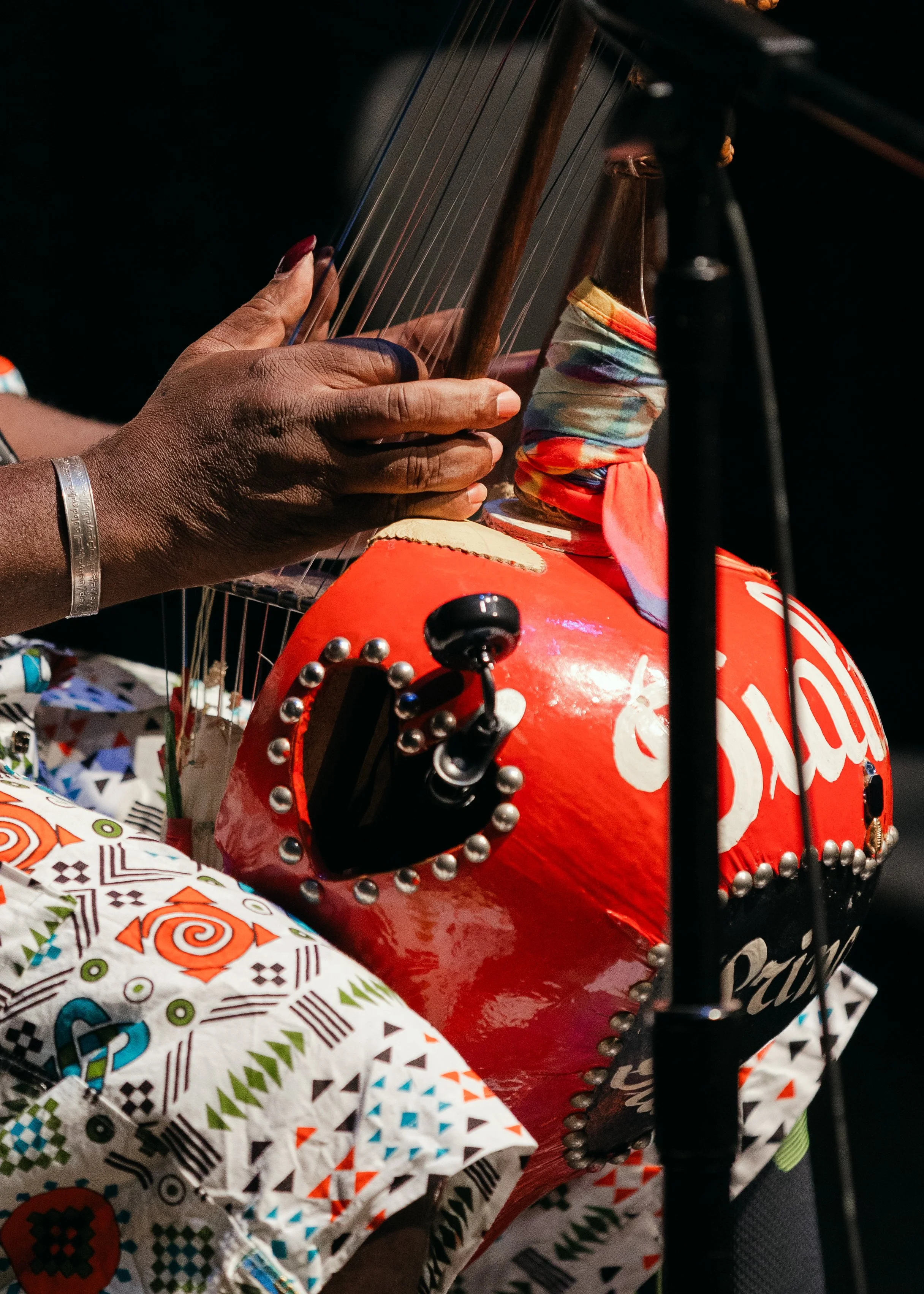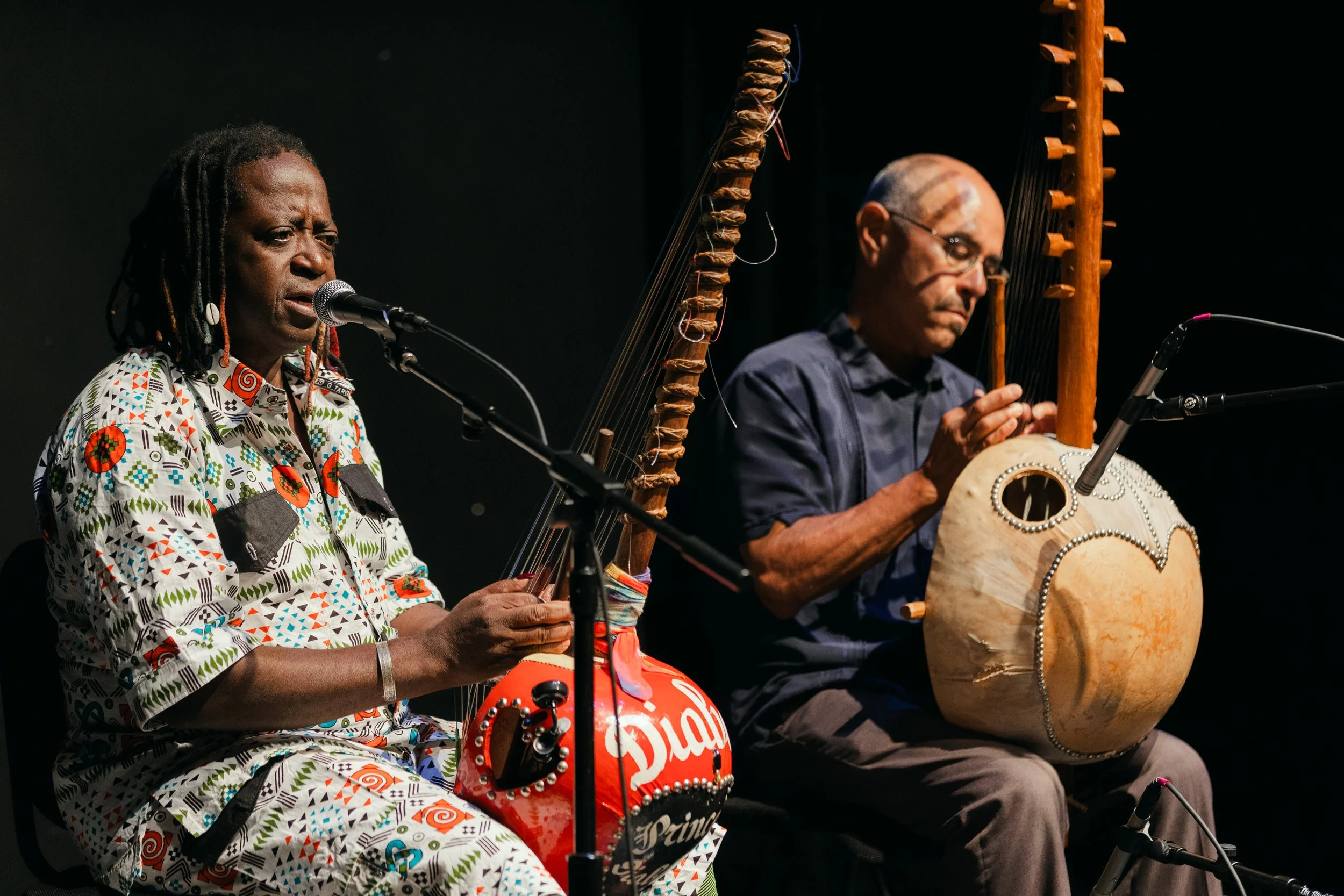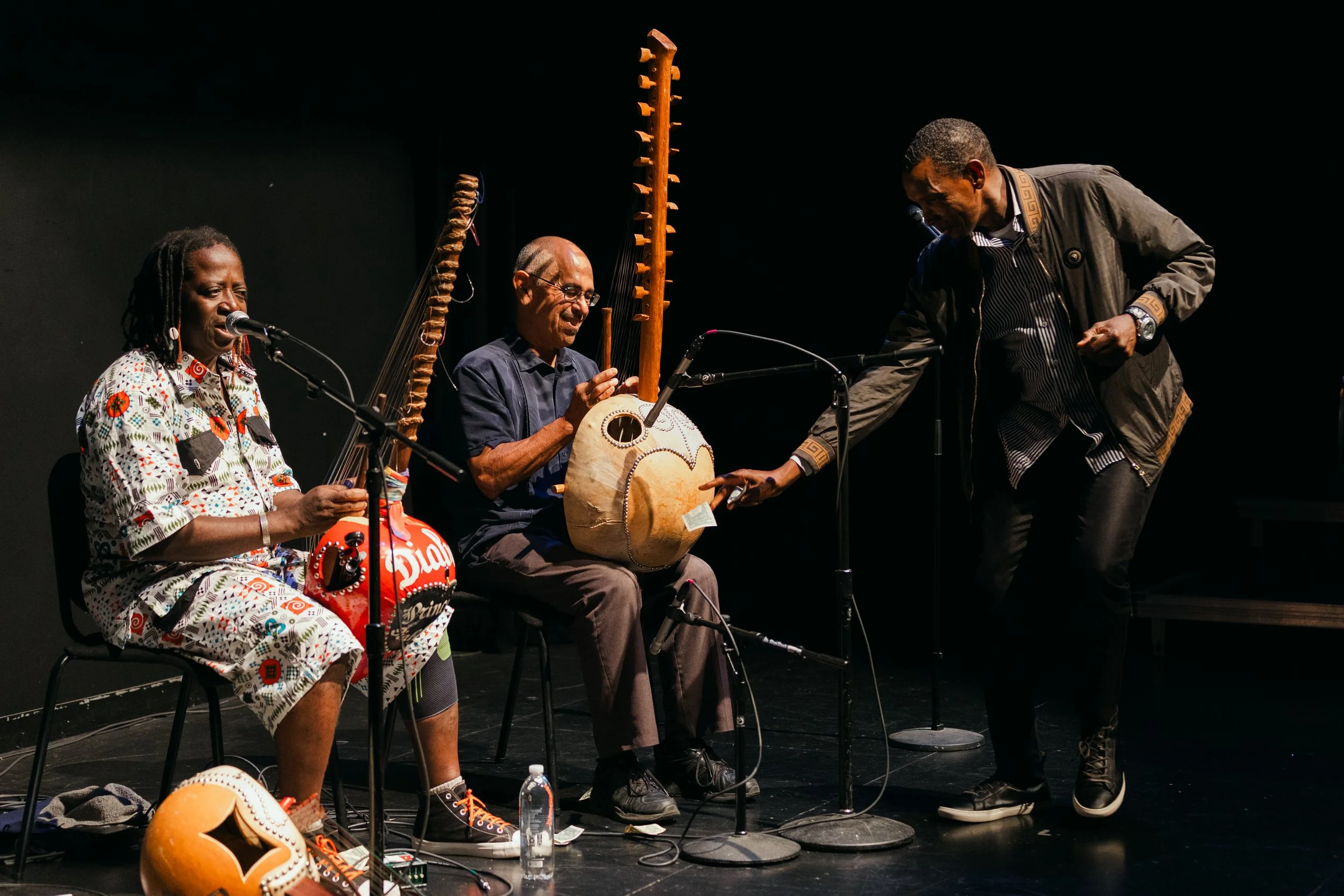Throwback on West African Music: What Inspired Today’s Beats
Before music was made in studios, there were the sounds of West African griots. More than creating community through music, they are the carriers of thousands of years of culture and tradition. The griot tradition comes from the Mali Empire, in which griots were the advisors to kings and their community’s informants. As African people were taken to the Americas for the slave trade, these musical traditions came with them, blended with other sounds and gave birth to the kind of music we know today: blues, jazz, and even hip hop.
Nowadays, griot lines still exist. At Santa Monica College (SMC), on Sept. 19, there was a performance-lecture by Prince Diabaté, Guinean griot; Ric Alviso, SMC professor and musician; and Ken Rosser, Canadian musician and friend of Diabaté. They brought to Santa Monica echoes of this tradition to a new audience. Diabaté, master player of the kora, a 21-string harp, shared his art and history with the audience.
As Diabaté explained it, being a griot is a part of himself. “To be a griot, you have to be born griot,” he said. He learned it from his father at the age of five, and it’s a tradition that is passed down generation after generation, keeping the history alive. Alviso, who played the kora alongside Diabaté, highlighted the importance of griots. He stated, “When a griot dies, it’s like an ancient library burning down in flames. We lose hundreds of years of history."
With his custom-made travel-sized kora that allows him to travel the world with his instrument, Diabaté shared his original composition “Son of a Dream,” a song that speaks to the youth of West Africa who try crossing the border in search of a better future in Europe, without even knowing if they will make it. For Diabaté, transmitting this art and history to the new generation is essential. He highlights this with his project to open a music school in Africa to share his knowledge and pass down the years of history that he carries.
Thiernot Diallo, a member of the audience and president of the Ghana Association of Southern California, introduced the spectators to the Djéliya, a West African tradition where the listeners give tips to the griot by spraying money on them to show their appreciation and respect. Influencing the crowd, the audience began dancing on African beats while “spraying” money to the griot from the beginning to the end of the show, bringing this heartwarming experience to Santa Monica.
As the show at SMC came to an end, one thing was clear: the griot tradition is far from dying. It lives in West Africa, in every griot, in our modern beats, and it carries years of history.







